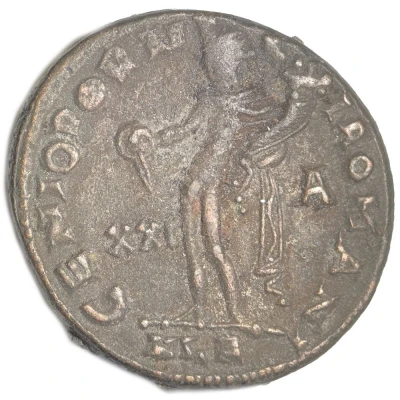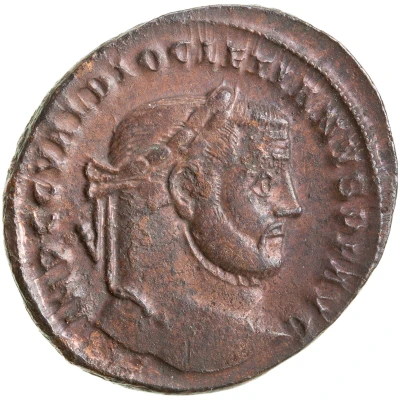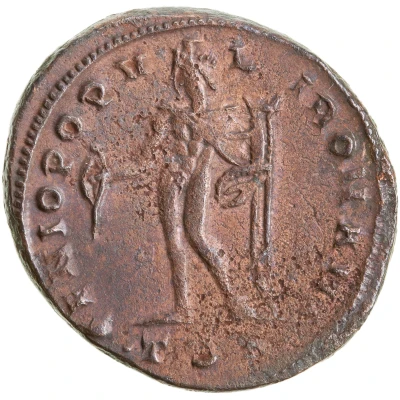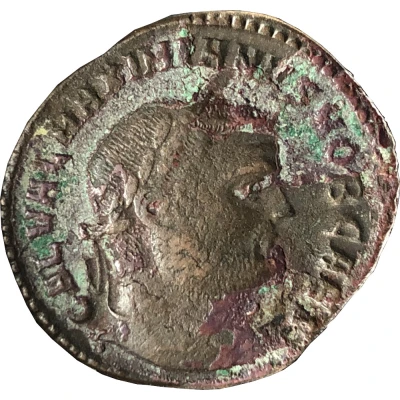
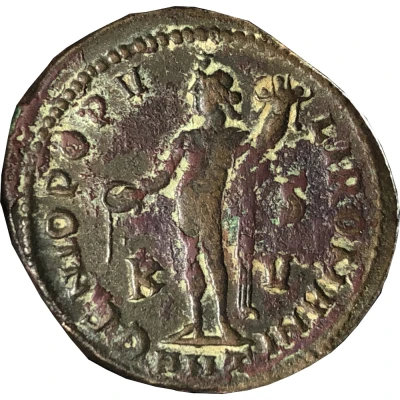

Nummus - Galerius as Caesar GENIO POPVLI ROMANI; Antioch
| Bronze | 9.14 g | 27.21 mm |
| Issuer | Rome › Roman Empire (27 BC - 395 AD) |
|---|---|
| Emperor | Diocletian (Gaius Aurelius Valerius Diocletianus) (284-305) |
| Type | Standard circulation coin |
| Years | 300-301 |
| Value | Nummus / Follis (¼) |
| Currency | Argenteus, Reform of Diocletian (AD 293/301 – 310/324) |
| Composition | Bronze |
| Weight | 9.14 g |
| Diameter | 27.21 mm |
| Thickness | 2.77 mm |
| Shape | Round (irregular) |
| Technique | Hammered |
| Orientation | Medal alignment ↑↑ |
| Demonetized | Yes |
| Updated | 2024-10-05 |
| Numista | N#239522 |
|---|---|
| Rarity index | 91% |
Reverse
Genius, wearing modius, nude, chlamys draped over left shoulder, standing left, pouring liquid from patera in right hand and holding cornucopiae in left hand.
K in left field. Officina letter over V in right field.
Mintmark in exergue.
Scripts: Latin, Greek
Lettering:
GENIO POPV-LI ROMANI
K - Officina / V
Unabridged legend: Genio Populi Romani.
Translation: To the Genius of the Roman People.
Edge
Plain
Comment
In the popular minds of the Eastern part of the Empire, the letter Θ used as a number 9 was linked to death, this explains why Eastern mints always replaced this letter in their 9th officina by the sum of the 4th and the 5th letters "Δε". This replacement started to disappear after the Empire became officially Christian under Constantine I and his successors.
Interesting fact
One interesting fact about this coin is that it features an image of Galerius, who was a powerful Roman emperor and caesar, on one side, and the Genius of the Roman People on the other. This coin was minted during a time of significant political and military change in the Roman Empire, and its design reflects the importance of the emperor's image and the idea of Roman unity and strength.

